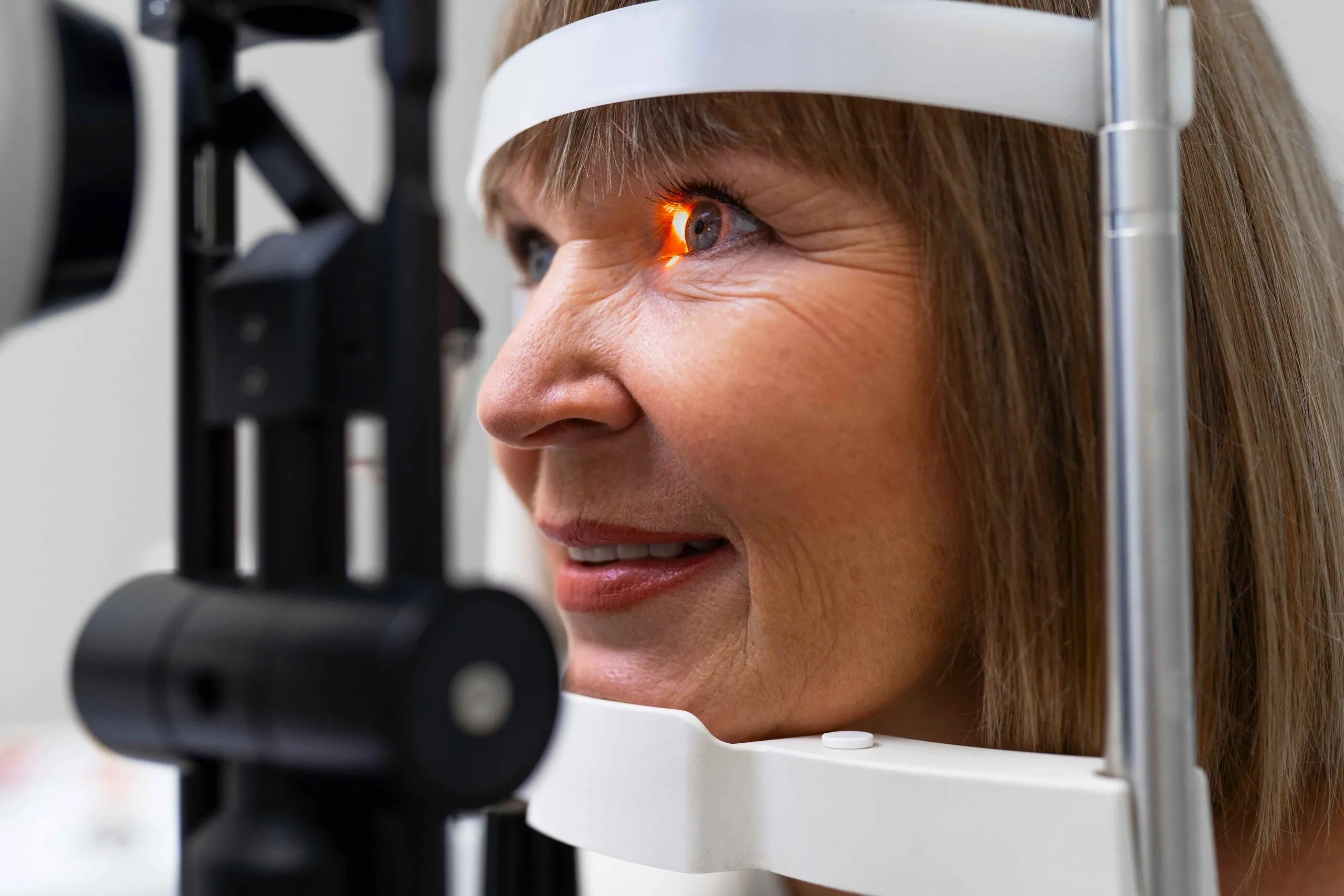
Acute glaucoma: how to act in this ocular emergency
Acute glaucoma is an ophthalmic emergency that requires immediate medical attention. Although it is often mistaken for other types of glaucoma, its sudden onset and potential to cause irreversible vision loss make it one of the most severe forms of this eye disease.
In this article, we explain what acute glaucoma is, its symptoms, and how it is treated, with the goal of helping you identify it in time and protect your visual health.
What is acute glaucoma?
Acute glaucoma, also known as angle-closure glaucoma, is a form of glaucoma that occurs suddenly, causing a rapid increase in intraocular pressure due to the blockage of aqueous humor drainage in the anterior chamber of the eye.
This type of glaucoma differs from chronic (or open-angle) glaucoma because its onset is sudden and the symptoms are very intense, quickly affecting the optic nerve. An acute glaucoma attack can cause irreversible damage within a few hours if not treated urgently.
Alert! Symptoms of acute glaucoma
Recognizing the symptoms of acute glaucoma is key to acting in time. The most common include:
- Intense eye pain, which may radiate to the head.
- Blurred vision or sudden vision loss.
- Perception of halos or flashes around lights.
- Redness of the affected eye.
- Nausea and vomiting, in some cases.
These symptoms can be mistaken for a migraine or an eye infection, so it is essential to see an ophthalmologist if you suspect anything.
Causes behind acute glaucoma
Acute glaucoma usually occurs when the drainage angle between the iris and the cornea closes, preventing the outflow of aqueous humor. This causes a rapid buildup of fluid inside the eye and a sudden increase in eye pressure.
This phenomenon, known as angle closure, can be associated with:
- Anatomical abnormalities in eyes with a narrow anterior chamber.
- Pupil dilation, for example, in dark environments or when using certain medications.
- Intense physical or emotional stress.
Risk factors for acute glaucoma
Although anyone can experience an acute glaucoma attack, certain factors increase the risk:
- Age: From the age of 50, the likelihood of developing this type of glaucoma increases due to anatomical and functional changes in the eye associated with aging.
- Female sex: Women have a greater anatomical predisposition to a narrow angle, which raises the risk compared to men.
- Family history: Having first-degree relatives with glaucoma increases the risk of developing it.
- Hyperopia: Hyperopic eyes tend to be smaller, which contributes to a narrower angle between the iris and the cornea.
- Predisposing ocular anatomy: People with a narrower anterior chamber or reduced drainage angle have a higher risk of angle closure, especially in situations that cause pupil dilation.
- Use of medications: Certain drugs, such as anticholinergics or decongestants, can cause pupil dilation and trigger an acute attack in predisposed individuals.
Identifying these factors during an eye exam allows for early intervention and prevention of complications.Detectar estos factores en una revisión oftalmológica permite anticiparse y prevenir complicaciones.
Urgent diagnosis of acute glaucoma
When acute glaucoma is suspected, diagnosis must be quick and accurate. The ophthalmologist will assess intraocular pressure, examine the condition of the optic nerve, and inspect the angle of the anterior chamber using techniques such as gonioscopy.
Additional tests like tonometry or ocular scans may also be used to confirm the diagnosis and evaluate the extent of the damage.
Immediate treatment of acute glaucoma
The treatment of acute glaucoma must begin urgently to prevent permanent damage. In the initial phase, oral or intravenous medications are administered to rapidly reduce intraocular pressure.
Once the condition is stabilized, the next step is to perform a laser iridotomy: a procedure that restores the flow of aqueous humor through a small opening made in the iris.
In some cases, surgery may be necessary, especially if the angle remains closed or if there are other complications.
Possible complications of acute glaucoma
If not treated promptly, acute glaucoma can cause irreversible damage to the optic nerve and lead to severe vision loss or even blindness.
In addition, repeated episodes can result in a chronic form of glaucoma, with progressive vision deterioration, even if the initial attack was brought under control.

Prevention and follow-up of acute glaucoma
Preventing an acute glaucoma attack is possible by identifying risk factors and ensuring proper follow-up. Regular eye exams are essential, especially after the age of 40 or if there is a family history.
In high-risk patients, the ophthalmologist may recommend a prophylactic iridotomy, even without prior symptoms, to prevent angle closure.
Follow-up after an acute glaucoma episode includes regular monitoring of eye pressure and optic nerve examinations to detect any future complications in time.
Frequently asked questions about acute glaucoma
How quickly can vision be lost due to acute glaucoma?
Vision loss can begin within hours. That’s why it’s so important to see a specialist immediately at the first signs of symptoms.
Is acute glaucoma always painful?
Yes, eye pain is one of the most characteristic signs. However, there are rare cases where the pain may be mild or even absent.
What happens during an acute glaucoma attack?
An acute glaucoma attack causes a sudden increase in intraocular pressure, which compresses the optic nerve and other eye tissues. This process leads to pain, blurred vision, and other symptoms.
Can I wear contact lenses if I’m at risk for acute glaucoma?
It depends on the case. It’s important that an ophthalmologist evaluates whether wearing contact lenses is advisable, especially if narrow-angle glaucoma has already been diagnosed.
How often should I have eye exams if i’m at risk for acute glaucoma?
An annual exam is ideal, although more frequent check-ups may be recommended for people at higher risk.